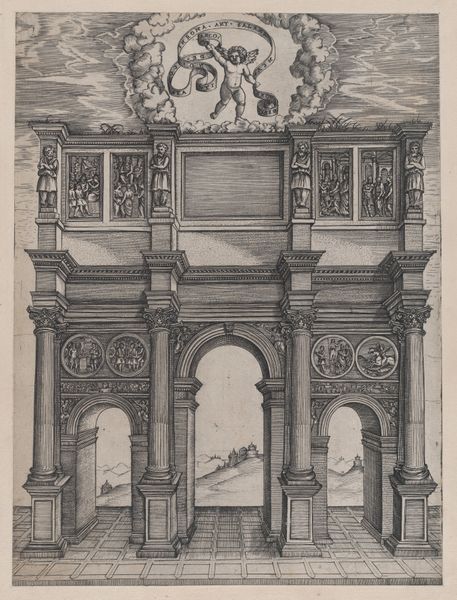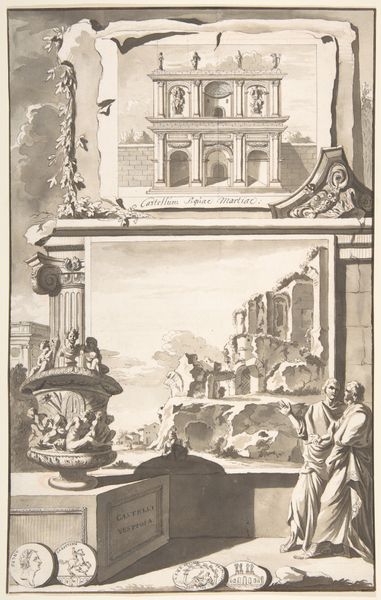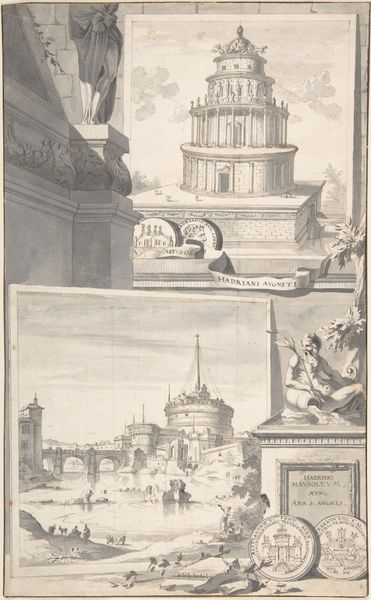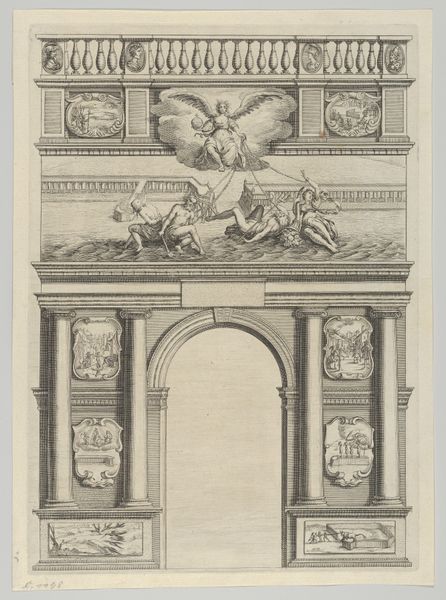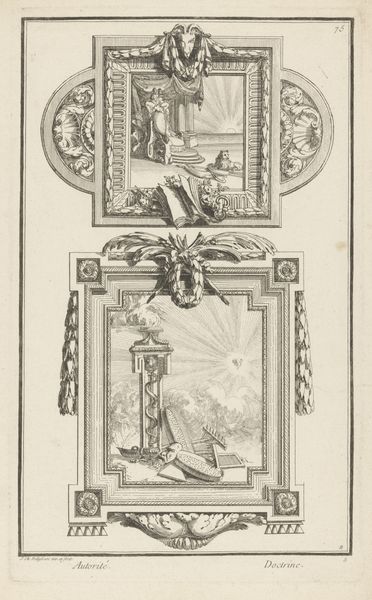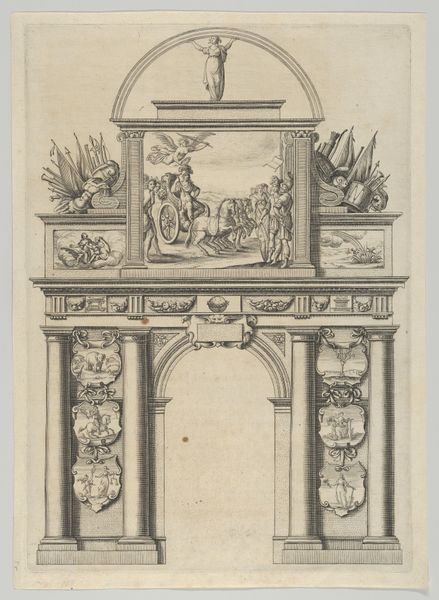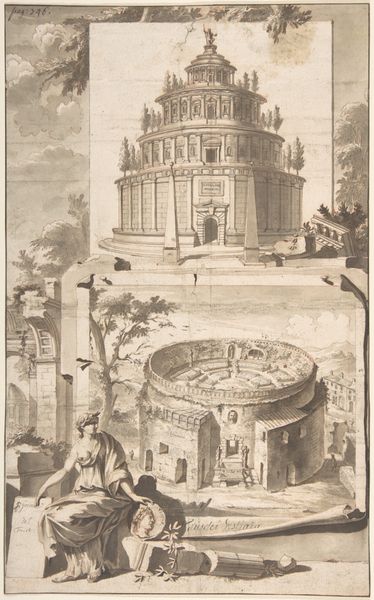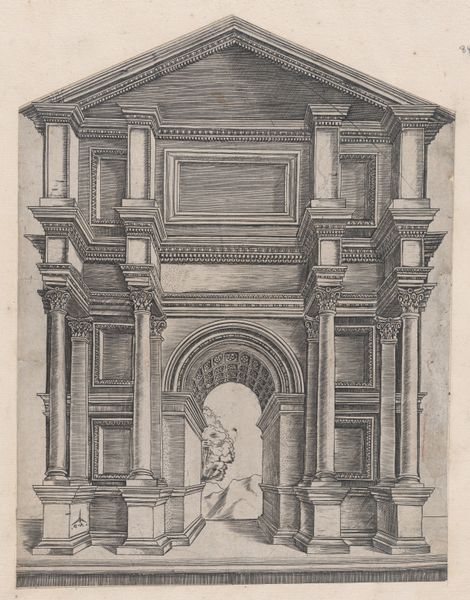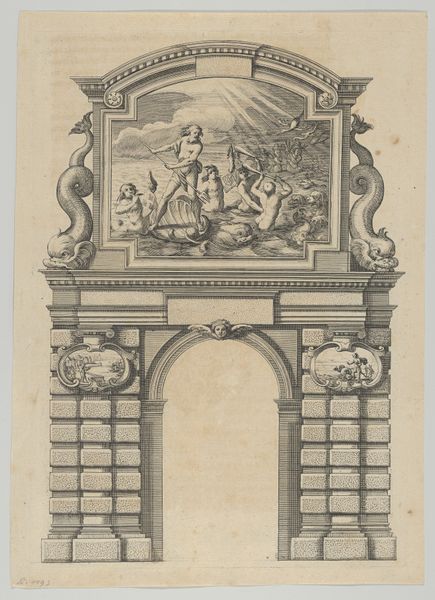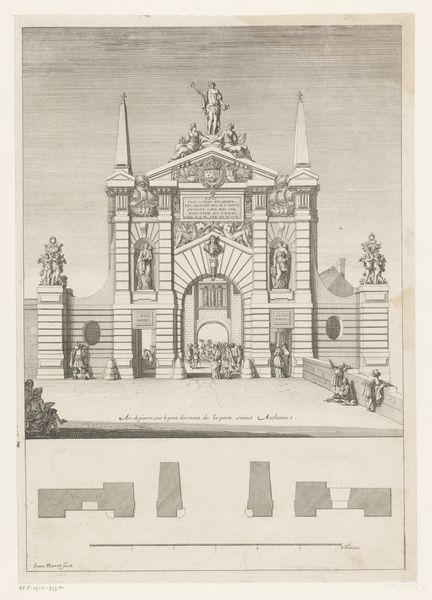
A Reconstruction of the Temple of Janus (above) and a View of the Ruins (below) 1690 - 1704
0:00
0:00
drawing, print, ink, engraving, architecture
#
drawing
#
baroque
# print
#
ink
#
cityscape
#
history-painting
#
engraving
#
architecture
Dimensions: 13 x 8 1/8 in. (33.0 x 20.6 cm)
Copyright: Public Domain
Curator: This artwork by Jan Goeree, created between 1690 and 1704, presents "A Reconstruction of the Temple of Janus (above) and a View of the Ruins (below)". It combines drawing, printmaking and engraving techniques using ink, currently residing here at the Metropolitan Museum of Art. Editor: Janus. Right away, that name feels weighty. Two faces, past and future, or looking inward and outward at the same time? And this image… It feels a little haunted, a bit like a stage set for a philosophical drama. Curator: Exactly. Janus, in Roman mythology, represents transitions, beginnings, and endings, providing potent symbolism ripe for contemplation. Visually, we have two contrasting images, a grand reconstruction and a decaying ruin. Goeree's use of the image of Janus captures a pivotal concept regarding historical sites and artifacts. Editor: I get the symbolism. Rebirth and decay. But what's striking me is the detail. Every little stone, meticulously rendered. It makes me wonder what Goeree thought he was preserving, the ideal or the reality? Curator: The image's success resides in that contrast. The engraving's architectural precision emphasizes the ideal while its monochromatic palette invokes the weight of history and the inescapable passage of time. This technique calls on visual tradition to provoke deep reflection, asking how civilizations remember and choose to rebuild from the past. Editor: So, it is almost like an architect's blueprint mashed with an archeological record. Look, the reconstructed Temple feels cold and academic and then you glance below. It is that bottom section that draws me in with a bittersweet melancholy that feels more truthful somehow. You can see people amidst the ruin and, like us today, contemplating something in the landscape from centuries before. Curator: These temples dedicated to Janus often symbolized peace and war. When the gates of the temple were open, it signified war; closed, peace. This artwork embodies those fluctuations. The reconstruction offers an ideal, while the ruins a reminder of the temple’s more tumultuous history. Editor: So, looking at both perspectives is key to fully capturing and carrying the cultural memory that Goeree captures? The full Janus experience! Thinking about what’s been lost, what remains, and maybe…what we might rebuild. This print does more than represent architecture. It gives insight into cycles. Curator: Precisely, offering layered cultural symbols that invite contemplation. It leaves you pondering beginnings, endings, and the ongoing dialogues between past and present. Editor: I see the architecture. Now I think it sees me, through time. Thanks.
Comments
No comments
Be the first to comment and join the conversation on the ultimate creative platform.
